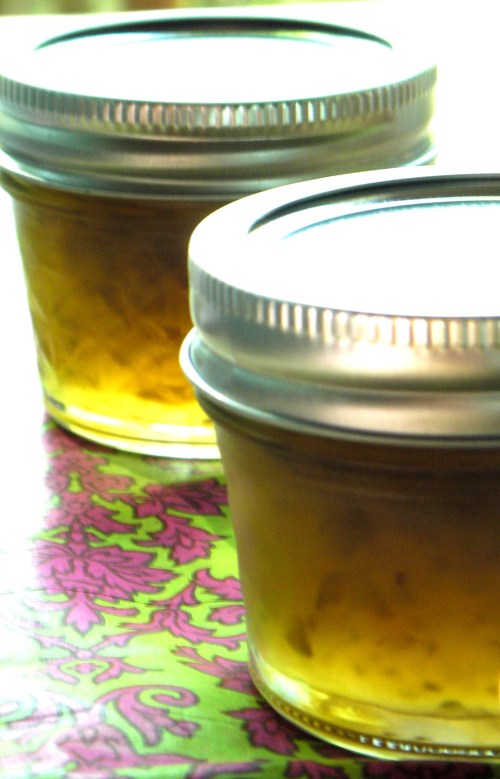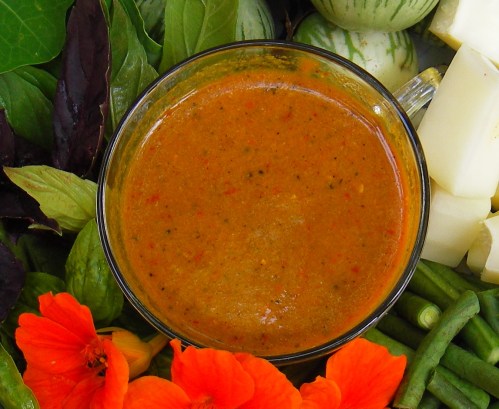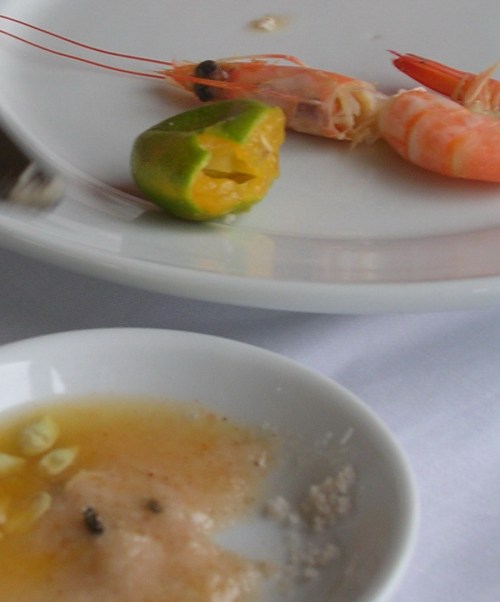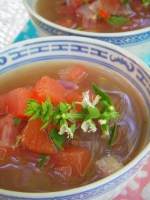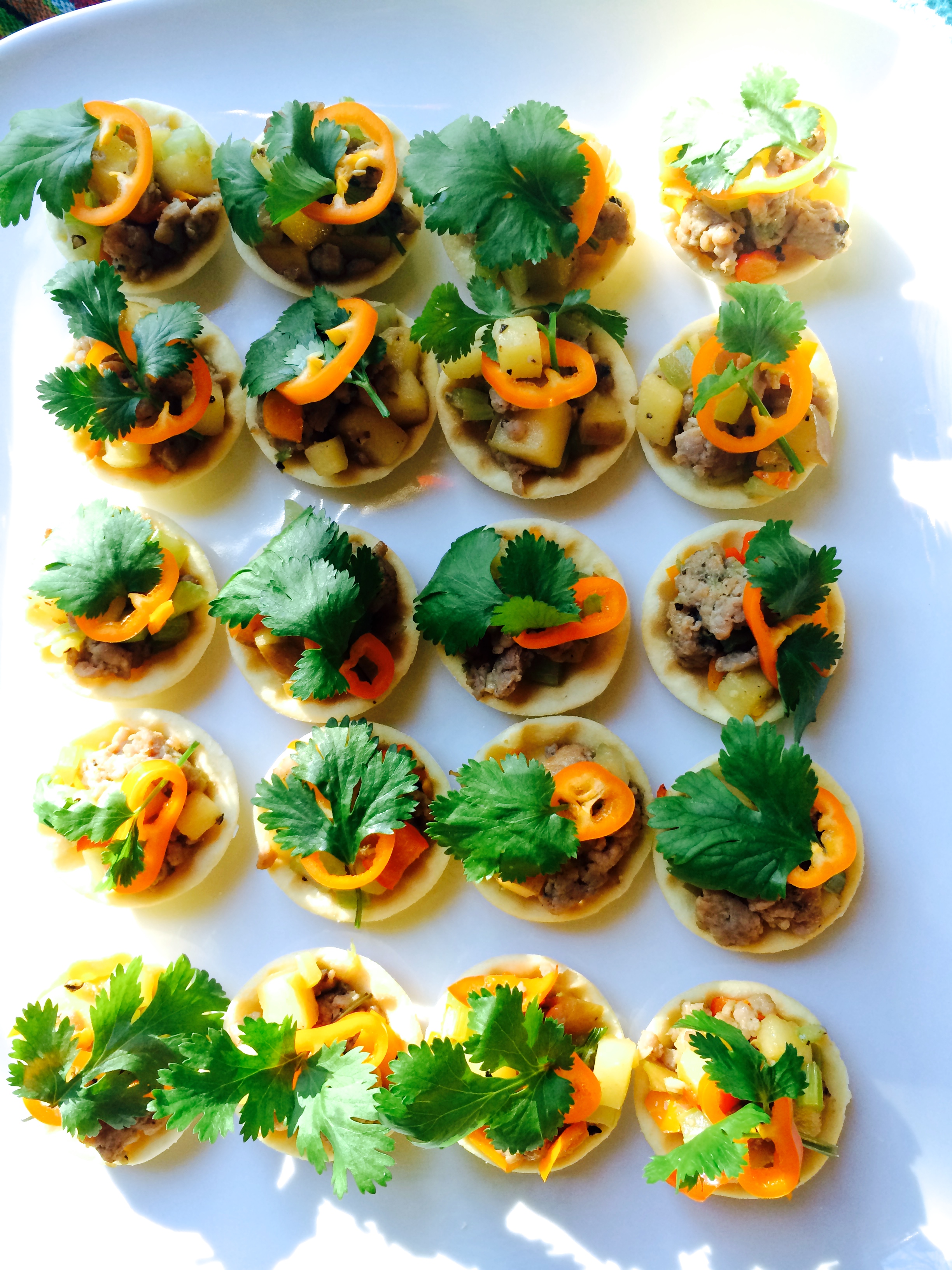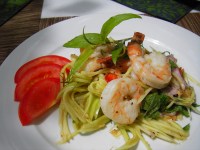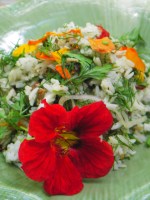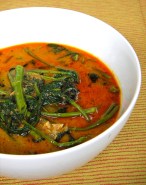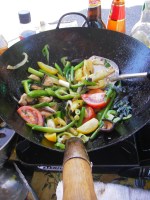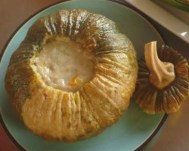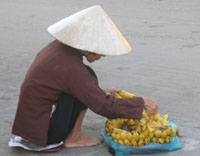For Richer or For Poorer
In Thailand, fish sauce is called nam pla. It is made of anchovies and salt which are fermented for 6 to 12 months under the tropical sun. The process of fermentation leaves behind an elixir laden with flavor and concentrated glutamic acid. This elixir creates a mouthful of flavor when added to salads, soups, curries, stir-fries, dipping sauces, rice and noodle dishes, or served simply as an everyday condiment – Nam Pla Prik. It is is a medium-brown liquid that is available in bottles of various sizes ready to use for seasoning and cooking.
When it comes to Thai cuisine and culture, one can’t live without fish sauce. It is important to get the best quality fish sauce, so I have some recommendations for buying it outside of Thailand. My favorite fish sauce brands, which I use interchangeably, are Thai Kitchen, Tiparos and Three Crabs. Once the bottle has been opened, you can leave it out at room temperature if you cook with fish sauce often, otherwise you can keep it in the fridge for up to 6 months. When it gets too salty or stale, replace it with a new bottle.
Thai people from all walks of life always have fish sauce in their kitchens and typically use it every day, either in their cooking or as a condiment. Thais value its significant flavor and Nam pla is part of Thai people’s lives, regardless of whether they are from rural villages, big towns or the capital city of Bangkok. In fact, it is a Thai’s best friend in all life situations, but especially in economic down times, or for newly married couples starting their lives together. When Thais face financial struggles, one often says “a fish sauce and warm rice is simply enough” (in Thai: มีข้าวกับน้ำปลาเพียงพอแล้ว). When we go through a tough time and have just enough money to buy rice and fish sauce, life is still good, still filled with hopes and dreams, and we still have each other, for richer or for poorer.
Spicy Fish Sauce
Nam Pla Prik
น้ำปลาพริก
Yield: 1/4 cup
Nam pla prik is no secret to Thai dining; Thais use it the way Americans use salt and pepper. This liquid of chili and garlic-infused fish sauce is delicious over warm steamed jasmine rice or just about any Thai food you are about to savor. The fresh layer of fish sauce enhances the food and adds another dimension to each mouthful, heightening the experience on your palate. My favorite way to use it is over a fried egg and steamed hot jasmine rice, with fresh sliced cucumber and tomatoes alongside. Any time you are dining at a Thai restaurant, you may ask for nam pla prik the same way that you would ask for salt and pepper.
¼ cup fish sauce 2 Thai chiles or a jalapeno pepper, sliced 2 cloves garlic, sliced ½ teaspoon sugar ½ teaspoon lime juice, optionalStir fish sauce, Thai chiles, garlic, sugar and lime juice together in a small bowl. Use this spicy fish sauce for seasoning. You may keep it in an airtight jar up to 2 weeks in the refrigerator.
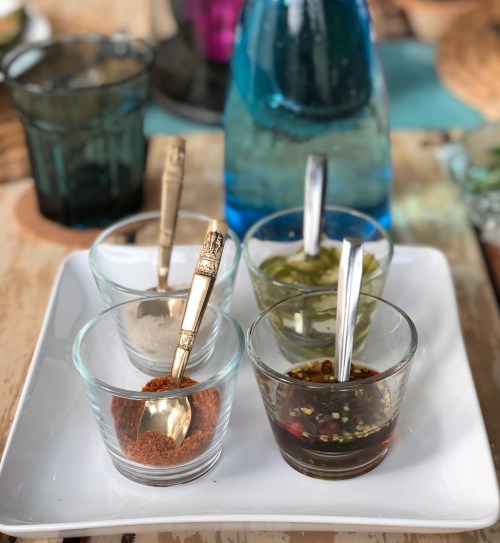
Thai Condiment Set – with Nam Pla Prik
Related articles
- Vietnamese Summer Rolls (markbittman.com)
- Rice Noodles with Asian Fish Sauce (the365cook.wordpress.com)












































